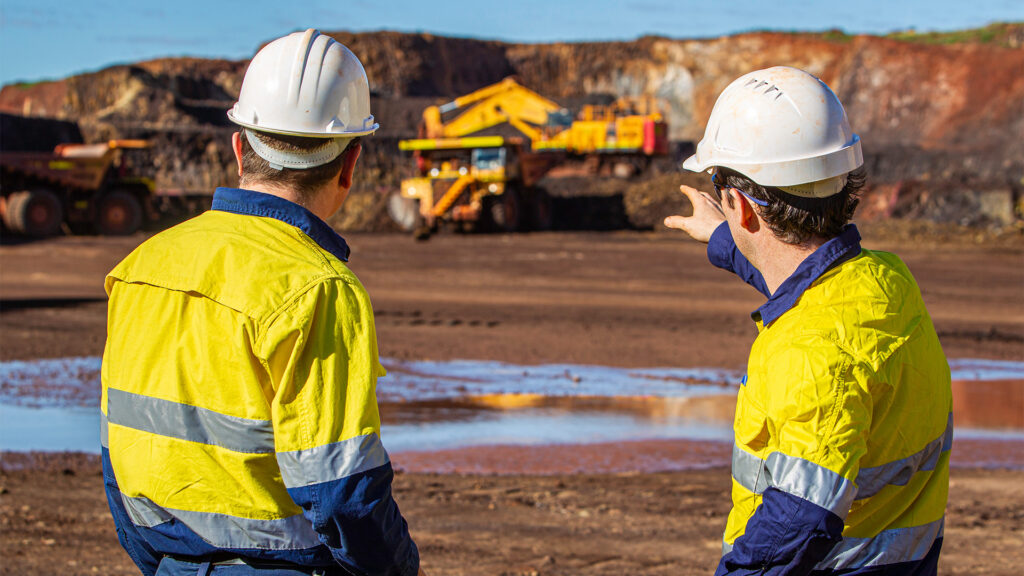Chalice Mining (ASX:CHN) has achieved a significant milestone in its Gonneville mining project located in Western Australia, as the initial Scoping Study presents promising outcomes for the prospect and future mining endeavors.
The recently released Scoping Study outlines two potential mine sizes for the project, which aims to extract platinum group elements, nickel, and other critical minerals from beneath farmland approximately 70 kilometers northeast of Perth.
According to Chalice’s projections, the transformation of its vast Gonneville deposit into a functioning mine, processing millions of tonnes of ore annually at its peak until at least 2045, is expected to incur costs ranging from $1.6 billion to $2.3 billion.
Drilling results reported in the study, along with upcoming data anticipated in October, indicate the discovery of additional ore reserves at Gonneville and other prospects along the 30-kilometer Julimar line of strike. These findings are anticipated to extend the mine’s operational life into new zones.
Among these prospective areas, Hooley’s and Hartog stand out as likely future deposits, displaying high promise based on drilling outcomes and insights from Chalice.
Earlier this year, Chalice revised its Mineral Resource Estimate for Gonneville to include 560 million tonnes at 0.54% Nickel Equivalent or 1.7g/t Palladium Equivalent. This estimate encompasses 16 million ounces of 3E PGE (palladium, platinum, and gold), 860,000 tonnes of nickel, 520,000 tonnes of copper, and 83,000 tonnes of cobalt.
Chalice, with a current market capitalization of $1.95 billion, anticipates a smoother funding process for the mine with a potential partner or partners (a decision currently in progress as part of the ongoing PFS).
While the initial “pre-funding” estimates of $1.6 billion to $2.3 billion are a starting point, they are likely to rise. However, the cost pressures and labor shortages experienced in Western Australia’s mining industry are expected to ease by the anticipated commencement of the project around late 2026.
The Scoping Study scrutinizes two potential mine sizes: one ramping up to 15 million tonnes per year from year six, and the second targeting around 30 million tonnes. Chalice indicates that the 15 million tonne option is based on a 240 million tonne open pit reserve, while the larger option rests on 440 million tonnes, which is between 40% and 80% of Gonneville’s present resource of 560 million tonnes.
Additionally, Chalice hints at the possibility of underground mining or expanding the open pit due to extra resources identified through ongoing drilling near the Gonneville resource. The study mentions the existence of 90 to 200 million tonnes of resources beyond the ultimate pit shells, not accounted for in the Study, which could lead to life extensions.
Chalice also points to recent high-grade intersections extending beyond the Gonneville Resource’s limits, showcasing additional potential.
The study underscores the environmentally advantageous position of the Julimar/Gonneville metals, essential for emerging decarbonization technologies such as lithium-ion batteries, electric vehicles, renewable energy, and green hydrogen production. Chalice sees alignment with government policies and the potential for a Western premium on products and targeted government support.
Regarding potential partners, Chalice continues discussions with numerous interested groups globally, indicating strong inbound interest from Western automakers, battery manufacturers, trading houses, and major mining companies.
The Scoping Study outlines indicative figures, suggesting annual revenues of around $1.3 billion and $2.1 billion for the 15 million tonne and 30 million tonne projects, respectively, over their respective timeframes. EBITDA is estimated at $670 million and $1.1 billion for the smaller and larger options.
With the positive Scoping Study outcomes, Chalice moves forward with the pre-feasibility study (PFS), which has already commenced and is set for completion in mid-2025. This timeline indicates potential mine work initiation around 2026, pending approvals and a Final Investment Decision based on partnership decisions.
Formal referral of the project to Western Australia and Commonwealth Governments is expected in the first half of 2024, initiating the regulatory environmental approval process.
Chalice anticipates that a Gonneville mine in Perth, located on wholly owned Chalice land, could contribute over $18 billion to Western Australia’s economy over two decades, generating approximately 1,200 jobs during construction and 500 during operation.
Chalice CEO Alex Dorsch emphasized the study’s significance in outlining development options for Julimar. He expressed optimism about the Gonneville project’s potential to yield strong financial returns and substantial economic benefits for the region, the state, and the nation over decades. The ongoing Pre-Feasibility Study will explore various enhancements and development alternatives based on the study’s insights.

